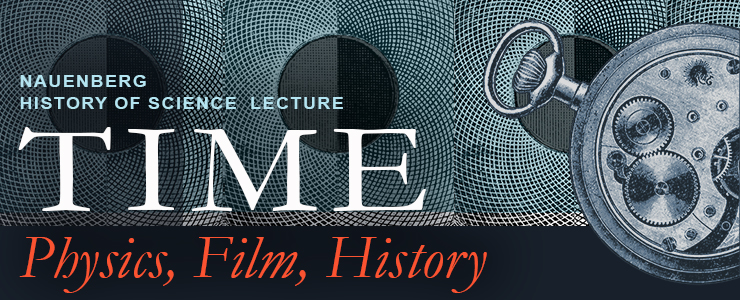Time: Physics, Film, History with Peter Galison
Time: Physics, Film, History with Peter Galison
Thursday, April 18, 2024 - 5:30pm to 7:00pm
Music Recital Hall and Virtual
Register here.
Henri Poincaré's and Albert Einstein's reformulation of simultaneity was long seen as a development from imaginative thought experiments. But the all-too-material and the most abstract notions of time cross in essential ways (Swiss Patent Office, Paris Bureau of Longitude). Galison explores this intersection in collaboration with the artist William Kentridge (“The Refusal of Time,” 2012), pushing history, physics, and philosophy into a more associative-imaginative register. From there, Galison turns to the 10,000 year struggle to contain radioactive materials—a duration twice recorded in human history—and finally to the time of black holes, and the image of the photon ring.
Peter Galison is the Joseph Pellegrino University Professor at Harvard University. He currently directs the Black Hole Initiative at Harvard, a leading center for interdisciplinary research on black holes. His books include How Experiments End; Image and Logic: A Material Culture of Microphysics; Einstein’s Clocks, Poincaré’s Maps; and, with Lorraine Daston, Objectivity. His latest feature film is Black Holes | The Edge of All We Know.
The Nauenberg History of Science Lecture is presented by the UC Santa Cruz Emeriti Association and co-sponsored by Crown College, Santa Cruz Institute for Particle Physics (SCIPP), the Arts Research Institute, the History Department and others. The lecture series honors Michael Nauenberg (1934–2019), a founding faculty member in the Physics Department at UCSC, who strongly believed in supporting scholarship connecting the sciences with the humanities.
Inaugural Nauenberg History of Science Lecture
Nauenberg History of Science Lecture was established in honor of Michael Nauenberg, a founding faculty member in the Physics Department at UCSC who came to the campus in 1966. During his distinguished academic career, he contributed to a remarkably broad range of fields, including particle physics, condensed matter physics, astrophysics, chaos theory, fluid dynamics, and the history of physics in the 17th-18th centuries.

